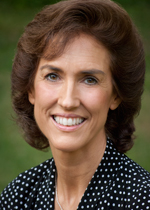Above: Rachel Rafael Neis. Detail from The Word Made Paint, 2004. Oil on canvas. 60 in. x 84 in. Courtesy of the artist.

Christine Hayes
It is a simple fact that our bodies are the inescapable medium of our existence. And yet, this simple fact is one that we, as a species, have not always accepted with equanimity. Indeed, over vast expanses of time and space, dramatically diverse and disparate cultures have wrestled with the simple fact of our embodied existence, seeking to transcend, escape, overcome, or otherwise deny the obvious—that we are, in a basic sense, embodied beings.
In Western culture, the life of the student or scholar has traditionally been depicted as another version of the denial of the body, achieved by a singular focus on the life of the mind in dualistic opposition to the concerns of the body.
Despite this cerebral image, students and scholars are themselves deeply embodied, as are the objects of their study, whether the latter are human groups, human individuals, or the ideas, arguments, texts, and cultural and material artifacts produced by those humans. The essays and articles in this issue of the AJS Perspectives train attention on these two “bodies of knowledge”—the body of the interpreting student and the bodies subjected to interpretation and study. The authors assembled here consider the complex ways these “bodies of knowledge” interact in the generation of knowledge. They show how the boundary between subject and object, between knower and known is continually blurred and renegotiated in the course of producing a new “body of knowledge.”
Bodies are sites of knowledge. They are encoded with information about choices and coercions, trends and rebellions, oppressions and freedoms, ideologies and iconoclasms, penury and luxury, labor and leisure, love and death. They are sites of identity, individual and collective, fluid and fixed, singular and manifold. Enduring the vicissitudes of time and space, they are essentially dynamic. For this reason, the knowledge they embody and convey is also dynamic.
The emergence of the body as a category of inquiry in Jewish Studies attunes us to intersecting discourses of race, ethnicity, nationality, gender, sexual orientation, ability, age, religious practice, and socioeconomic status. I hope you enjoy exploring these intersections through the essays and articles assembled in this issue of AJS Perspectives, and that they inspire you to wrestle in productive ways with the embodied character of your own teaching and research.
Christine Hayes
Yale University